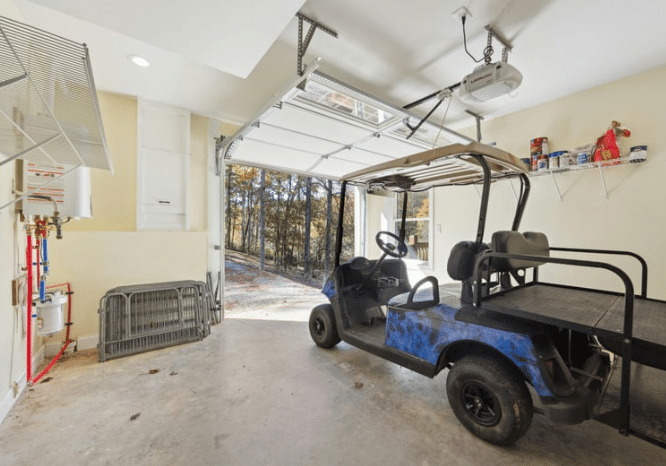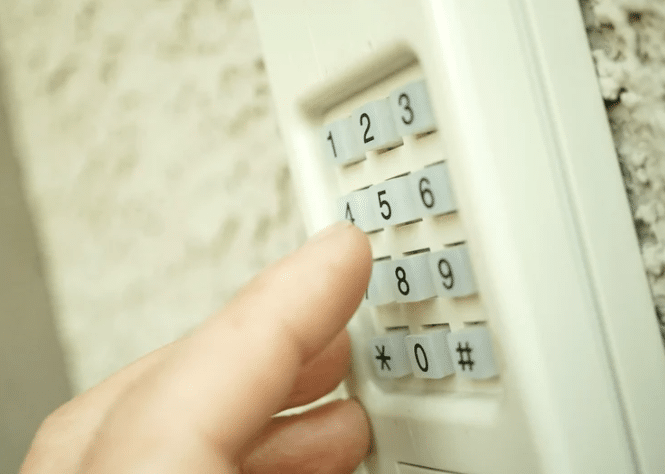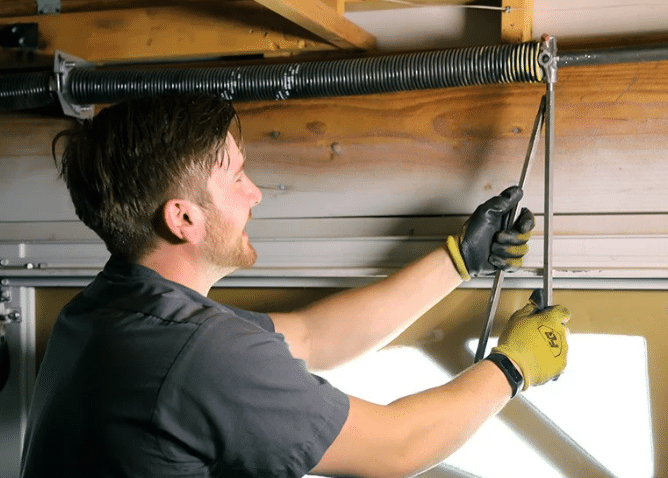Explore the essential parts of a garage door opener—learn what each component does and how they work together for smooth operation.
Garage doors are one of the most used entrances in a home, often opening and closing multiple times a day. Behind this convenience is a system of well-engineered components that must work seamlessly together. When any part of this system fails, it can cause delays, inconvenience, and even safety hazards.

For homeowners and businesses alike, understanding the essential parts of a garage door opener is key to maintaining optimal functionality. Regular inspection, maintenance, and timely replacement of these components can prevent costly repairs and extend the life of your garage door system. This guide provides an in-depth examination of these essential components, enabling you to make informed decisions about your garage door opener.
Whether you’re dealing with a malfunction or simply upgrading an older system, knowing which parts for a garage door opener matter most will help you maintain the efficiency and reliability you expect. Let’s dive into the crucial components that keep your garage door working perfectly.
Understanding the Core Parts for a Garage Door Opener
Motor Unit: The Heart of Your Garage Door Opener
The motor unit is the powerhouse of any garage door opener system. It provides the mechanical force necessary to open and close the door. Motors come in different sizes and power ratings, typically measured in horsepower. A higher horsepower motor is better suited for larger or heavier doors.
Properly functioning motors ensure smooth operation and can reduce strain on other components. If your garage door opener motor starts making unusual noises or struggles to move the door, it may be time for a replacement.
Drive Mechanism: How Motion is Transferred
The drive mechanism connects the motor to the garage door and is responsible for transmitting motion. There are several types of drive mechanisms:
- Chain Drive
Chain drives use a metal chain to move the garage door along its track. They are known for durability and affordability. However, they tend to be noisy, which might be a concern in homes with attached garages or bedrooms above the garage.
- Belt Drive
Belt drives operate similarly to chain drives but use a rubber belt instead. This results in quieter operation and smoother movement. Belt drives are ideal for homes where noise reduction is a priority, though they typically cost more than chain-driven models.
- Screw Drive
Screw drives use a threaded steel rod to move the door. With fewer moving parts, they often require less maintenance. They are a good middle-ground option but may be more affected by extreme temperatures, which can influence performance.
- Direct Drive
Direct drive systems feature a stationary chain with a moving motor. This minimalist design greatly reduces vibration and noise. These systems are among the quietest and most reliable, but also tend to be more expensive upfront.
Each type has its pros and cons, so understanding your specific needs is important when choosing or replacing this part.
Vital Safety and Control Parts for a Garage Door Opener
Safety Sensors: Keeping You and Your Family Safe
Safety sensors are located near the bottom of the door tracks and detect obstacles in the door’s path. If an object or person is detected, the sensors signal the opener to stop and reverse the door. These sensors are a crucial safety feature, especially for households with children and pets.
Maintaining properly aligned and functioning safety sensors is essential. If your door refuses to close completely, misaligned sensors are often the culprit.
Remote Controls and Keypads: Convenient Access Points

Modern garage door openers offer various control options:
- Remote Controls: These are handheld devices typically kept in vehicles, allowing you to open or close your garage door with the press of a button. Most systems support multiple remotes, which can be programmed to suit your household’s needs.
- Wireless Keypads: Mounted outside the garage, keypads let you open the door by entering a secure code. This is especially useful for children, guests, or when you don’t have a remote or key.
- Smartphone Integration: Many modern systems support smart garage technology. With a compatible app, you can control and monitor your garage door from anywhere. You can check if the door is open, receive alerts, and even grant temporary access—all from your phone.
Keeping these control devices in good working order ensures you can access your garage easily and securely.
Wall Switch: Simple, Reliable Operation
The wall-mounted switch offers an alternative way to operate your garage door opener from within the garage. It often includes additional features like a light control button or a vacation lockout mode.
If your wall switch fails, it can disrupt normal operation and may require replacement or rewiring.
Essential Mechanical Parts for a Garage Door Opener System
Trolley and Rail Assembly: Guiding the Movement
The trolley connects the door to the opener and travels along a rail. This assembly guides the door’s movement and ensures it opens and closes smoothly. Regular lubrication of the rail and inspection of the trolley is recommended to prevent wear and tear.
If your door hesitates or stutters while moving, the rail or trolley may need adjustment or replacement.
Springs: Counterbalancing the Door

Garage door springs are critical for balancing the weight of the door. There are two main types:
- Torsion Springs: Mounted above the door, they provide more control and last longer.
- Extension Springs: Located along the sides, they are more common in older systems.
Worn or broken springs can make the door difficult or dangerous to operate. It’s best to leave spring replacement to professionals due to the high tension involved.
Cables and Drums: Supporting Safe Operation
Cables work with the springs to lift and lower the door smoothly. Drums guide the cables and maintain tension. Frayed or damaged cables can snap and cause serious injury or damage.
Regular inspection and prompt replacement of worn cables are key to maintaining safe operation.
Frequently Asked Questions
What are the parts of a garage door opener?
A garage door opener typically includes the motor unit, rail or track, trolley, chain or belt drive, safety sensors, and remote controls. It also has limit switches and force adjustment controls for safe operation. Each part works together to open and close the garage door smoothly.
What tools do you need for a garage door opener?
Common tools include a drill with bits, a socket set, an adjustable wrench, screwdrivers, and a ladder. You may also need pliers, a level, and a measuring tape for precise installation or repairs. Safety gear, such as gloves and safety glasses, is also recommended.
What is the motor on a garage door opener?
The motor is the main power source that drives the garage door opener system. It’s usually mounted on the ceiling and turns a gear or drive system (chain, belt, or screw). The motor’s horsepower (typically 1/2 to 1 HP) determines how heavy a door it can lift.
How to fix a noisy garage door opener motor?
Start by tightening loose hardware and lubricating moving parts, such as the chain, rollers, and hinges. If the noise persists, check for worn gears or loose mounting and replace damaged components. Switching to a belt-drive model or installing a vibration isolator can also help reduce noise.
How to repair a garage door opener?
Begin by diagnosing the issue—check for power supply problems, remote control issues, or sensor misalignment. Replace any damaged parts, such as the gear assembly, capacitor, or circuit board. If the motor fails, it may need professional replacement depending on the model and age.
Conclusion
Understanding the essential parts of a garage door opener is critical for maintaining a reliable and safe system. From the motor and drive mechanism to safety sensors and mechanical components, each part plays a vital role in smooth operation. Staying informed and proactive about maintenance can save you time, money, and hassle in the long run.
Whether you’re troubleshooting an issue or planning a system upgrade, having a clear grasp of these components ensures your garage door opener performs at its best. When it’s time to replace or repair parts, choosing quality components and professional service is crucial to achieving optimal results.
Grapevine Garage Door is here to help with all your garage door needs. From expert maintenance to reliable repairs and top-quality parts, our team is dedicated to ensuring your garage door operates safely and efficiently.
End Note
Grapevine Garage Door in Grapevine, TX, provides the best care and attention when it comes to your garage door. Whether you need a complete opener replacement, spring repair, or routine maintenance, our experienced technicians deliver reliable service at an affordable price. We understand the importance of a functioning garage door to your daily life and work hard to keep it running smoothly.
Explore our full range of services and learn more about our expert garage door repairs. For helpful tips and common questions, visit our Q&A page, and discover who we are on our About Us page. We also invite you to browse our gallery to see examples of our work.
If you’re ready to schedule service or have any questions, don’t hesitate to contact us. We take pride in offering top-quality service and ensuring your garage door system performs at its best. Trust us to keep your garage door safe, efficient, and reliable.
Grapevine Garage Door & Gates
2958 Wentwood Dr.
Grapevine, TX 76051
+18178092507

